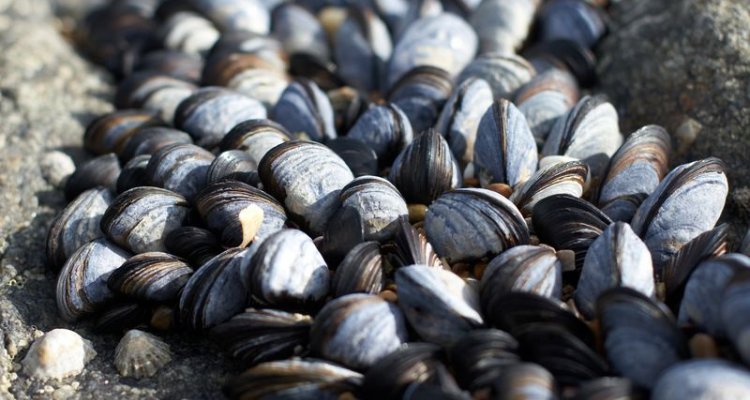New mussel beds in Wadden Sea manage to survive

Key role in ecosystem
Mussels and mussel beds are protected by law as important elements in the Wadden Sea ecosystem. Mussel beds that have fallen dry are important for a good quality of the habitat type 'tidal sand flats' and are an important food source for bird species such as the oystercatcher. Wageningen Marine Research, commissioned by the Ministry of LNV, maps a number of mussel beds on the tidal flats every year to gain insight into changes in the location and size of the mussel beds. Information is also collected on the composition of the bed, such as the area covered by mussels and oysters, the biomass and length distribution of both mussels and oysters and the presence of other organisms on the mussel bed.
Varied ecosystem with several year classes
Mussel beds generally slowly decline in surface area, cover percentage and population density after the year of their creation. On the mussel beds, the percentage of empty shells, macroalgae and barnacles increases in relation to the living mussels. The decline in surface area and cover is occasionally interrupted by good seed production, after which the process begins again. Over the years, a mussel bed with several year classes and a varied life community gradually develops. Despite the similarities in general development, large differences can be seen in the development between individual mussel beds within a year. These differences can be caused by location or by characteristics of the mussel bed, such as its resistance to storms and predation.
New mussel beds
Two new mussel beds were found in 2018. It is known from previous research that many newly formed beds disappear within the first five years. The chances of survival after the first five years increase significantly. The two new mussel beds survived the first years well and were found again in 2019 and 2020. The development of these newly formed beds will be further monitored in the coming years.
International reports
The surveys are fed into the Trilateral Monitoring and Assessment Programme (TMAP) for the Wadden Sea. The data is also used in reports on the state of nature in the Natura 2000 area of the Wadden Sea.